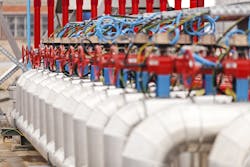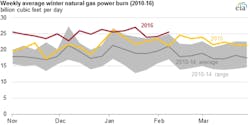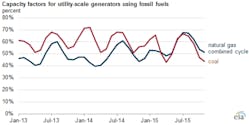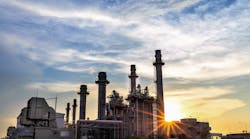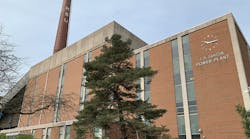Bentek Energy reported that the electric power sector has experienced natural gas consumption (gas burn) at its highest numbers ever for a winter season, according to the U.S. Energy Information Administration (EIA).
From Nov. 1 through Feb. 8, gas burn in the sector averaged 25 billion cubic feet per day (Bcf/d), representing a 17 increase over last year’s 21.4 Bcf/d average. The past five years saw an 18.8 Bcf/d average.
All images courtesy of the U.S. Energy Information Administration
While coal capacity reductions and the availability of efficient gas-fire generating units have contributed to the increase, the primary cause is low natural gas prices.
The summer season remains the peak of natural gas consumption, but winter usage has increased as electricity increasingly becomes households’ main heating source and as more generations switch to gas. "The electric power sector is the largest consumer of natural gas," using more than the industrial and residential and commercial buildings sectors.
The Henry Hub in Louisiana had spot natural gas at its lowest average since 1999 at $2.61 per million British thermal unites (MMBtu) in 2015. Prices fell throughout 2015, ending up in December at $1.93/MMBtu, which was the lowest price since March 1999.
In its Short-Term Energy Outlook, the EIA predicts natural gas prices will increase over the next two years and the consumption of natural gas for power generation will decrease. Even with the decrease, however, "power-sector consumption of natural gas would still be near historically high levels."
U.S. Energy Information Administration, Electric Power Monthly
The EIA presented other factors in the trend, including:
- The capacity factors for natural gas-fire combined-cycle plants have eclipsed coal-fired plants. Capacity factors show how much a fleet of generators is run.
- New natural gas plants are more economically attractive because of efficiency improvements.
- Coal plant retirements are growing in number.
Nearly the entire U.S. has seen an increase in gas burn but this winter, but specific geographic trends include:
- The largest percentage increase was in the Pacific Northwest because of lower than normal hydro generation in 2015.
- The biggest users of natural gas were the Southeast and Northeast regions, with increases by 17 and 15 percent, respectively.
- The Southeast’s increase was driven by coal plant retirements and declining utilization rates for the facilities.
- The Northeast’s Marcellus region consistently sees natural gas prices below gas at the Henry Hub.
- Natural gas is easier to move to users because of infrastructure additions.
